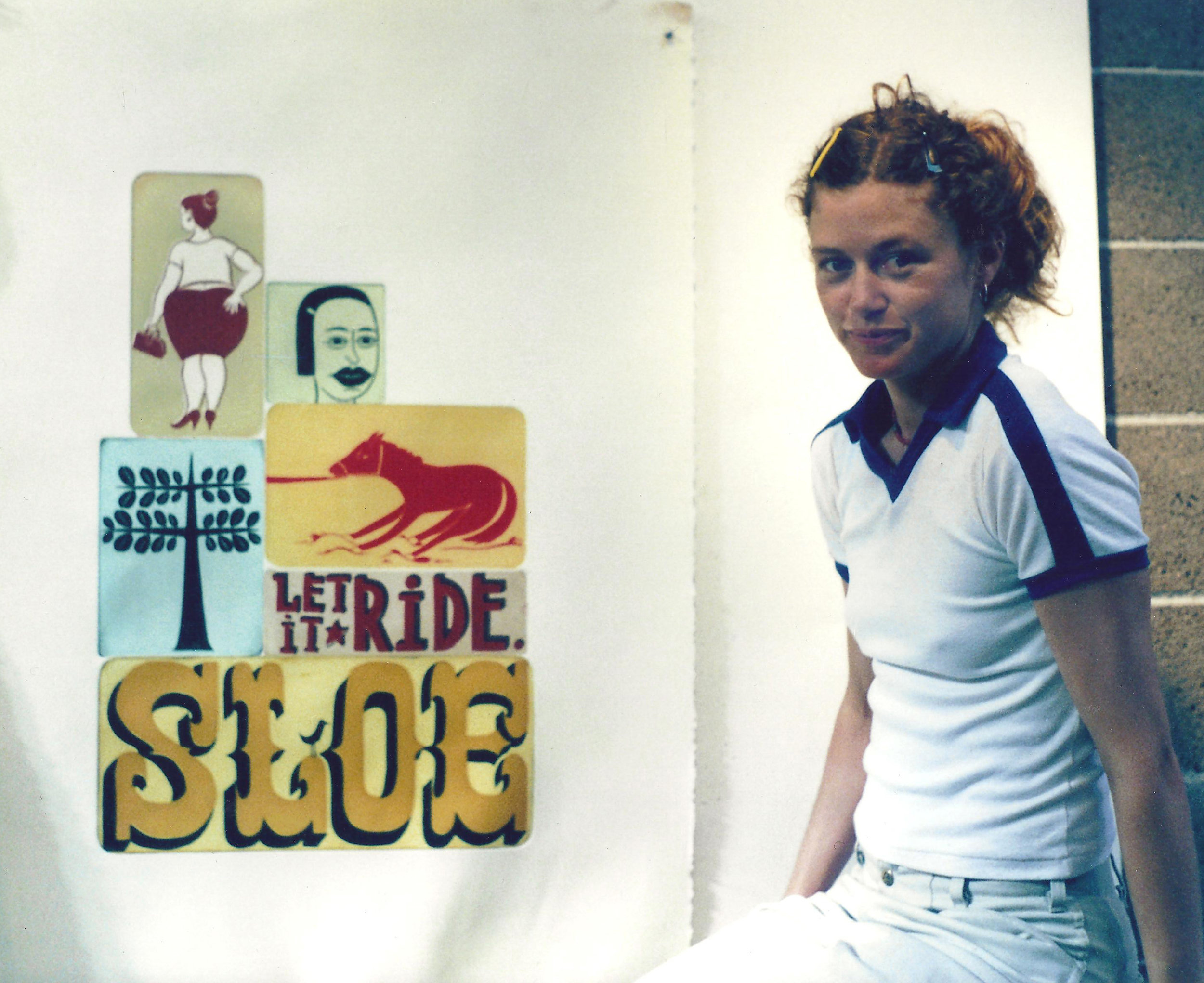April, 22, 2018
During the mid to late 1990s, the Bay Area art scene was having a renaissance of sorts. An interesting new group of young graffiti artists began to catch the attention of galleries in Europe and New York. Writer Glen Helfand called them the “Mission School,” and their work was a topic of conversation from coast to coast.
In September of 1997, Pam Paulson and I flew to New York on an artist-seeking adventure for Paulson Press. At the Drawing Room gallery, we found ourselves standing in front of a stunning installation by the Bay Area’s very own Margaret Kilgallen. It was the most significant show we saw on that trip. Soon thereafter, Paulson Press was asked to work with an artist to create a gift print for the Headlands Center for the Arts, a nonprofit artist residency program in Marin, California. We asked Headlands for a list of artists who had been or were currently in residence. When we discovered Margaret’s name on the list, it was an easy choice.
The Drawing Room, New York, 1997
We decided it would be best to meet with her at her studio, which was in an industrial building on the outskirts of the Mission. Her work covered the stairwell walls leading to her second-floor studio. Intrigued, we followed the image trail up the stairs.
Her studio was overflowing. Every surface was piled high with her artifacts and work: an old 1920 Singer sewing machine on one table, piles of books on another, stacks of drawings, hand-painted neoprene surfing hoods, the walls covered with paintings and works on paper. Her constructions, sewn clothing, and canvas spilled onto the floor. We had to be careful where we stepped. Her vision, her voice, filled every square inch of the space. I remember thinking, “I’ve never seen a mind quite like this…”
Margaret Kilgallen in her studio, San Francisco, CA, 2000. Production still from the Art in the Twenty-First CenturySeason 1 episode, Place. © Art21, Inc. 2001.
Margaret worked with us for about two weeks to create the gift print, titled “Half-Cocked,” along with four other prints. It was wonderful to watch her work. She sat with her head bowed gracefully over her work. Her hand was as steady as her focus.
LINDA MAR, 1999: Color spitbite aquatint and sugarlift aquatint with softground etching. 26 x 19”, edition 30
In some ways, everything about Margaret romanticized the past—her interest in old fonts, books, train-hopping, and hobo culture, even the way she looked. But at the same time, her attitude and philosophy came from a future I could not imagine. She refused to sign contracts with important galleries and preferred to keep her options open. The very idea that a young aspiring artist would turn down the attention of an established gallery seemed so foolhardy to me—either that or very avant garde. I’m pretty sure she drove an old push button Dodge Dart. She listened to surf music and let me watch her copy of Chasing Mavericks. She played the banjo and posed for trendy magazines (she called them all “zines”) in a wetsuit with her longboard, her long willowy body, her lovely reddish wavy hair blowing in the wind. Margaret inhabited an alternative cultural scene.
Making etchings is slow work. The days weren’t long enough. She would take her work home to finish in the evening so that her plates would be ready for us to etch in the morning. For the final five images, we used small plates that could be rearranged, constructing new images with the same components, closely emulating the way she worked in her own studio.
UNTITLED, 1999: Color spitbite and sugarlift aquatints, with chine colle, 54" x 31", edition of 30
Working with Margaret was more than just an introduction to graffiti street art and a bohemian approach to a conventional art scene. Working with Margaret illuminated the truth: that all successful artists work hard.
Sadly, Margaret passed away in 2001, tragically young, at the age of 33. I was fortunate to have had the opportunity to work with her. I am proud to be a small part of her legacy.





